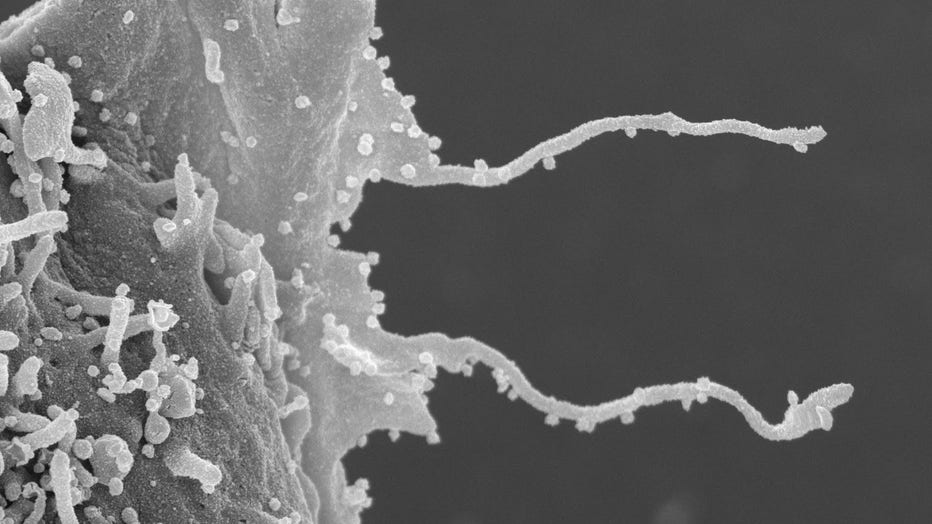COVID-19 infection triggers growth of arm-like tentacles in cells, microscope images show
LOS ANGELES - New electron microscope images released in a study from a team of researchers led by scientists at the University of California, San Francisco appear to show cells infected with COVID-19 growing arm-like tentacles to infect other cells.
RELATED: CoronavirusNOW.com, FOX launches national hub for COVID-19 news and updates
It may be a horrifying new discovery to some, but authors of the recent study say it puts them a step closer to effectively treating the novel coronavirus.
In a study published on June 28 in the Journal Cell, researchers looked at how SARS-CoV-2 spreads, in hopes of developing more therapeutic treatments to fight the virus.
One way COVID-19 is so successful in terms of rapid viral spread throughout the body is how the virus impacts its host cells. According to the newly published study, the novel coronavirus causes hijacked cells to grow tentacle-like protrusions — referred to by medical experts as filopodia — which, in turn, are used to spread the virus to neighboring cells.
“Viruses are unable to replicate and spread on their own: they need an organism to carry, replicate, and transmit them to further hosts,” explained study co-author Dr. Mehdi Bouhaddou, of Gladstone Institutes and UCSF.
“To facilitate this process, viruses need to take control of their host cell’s machinery and manipulate it to produce new viral particles. Sometimes, this hijacking interferes with the activity of the host’s enzymes and other proteins,” said Bouhaddou. “Once a protein is produced, enzymes can change its activity by making chemical modifications to its structure.”
RELATED: Dr. Fauci says 'it will be when not if' for a COVID-19 vaccine

FILE - Electron microscopy image of Vero E6 cells infected with SARS-CoV-2 virus, the causative agent of COVID-19, produce filopodia protrusions (finger-like projections) extending out from the cell surface to enable budding of viral particles (circu (Photo credits to Dr. Elizabeth Fischer, NIAID/NIH)
While the new finding may prompt the hairs to stand up on the back of one’s neck, Dr. Nevan Krogan, director of the Quantitative Biosciences Institute at UCSF, said the finding is a common trait for deadly viruses and good news for getting closure to beating the illness.
“Understanding the underlying biology of a virus only helps us undermine its power. By understanding how it co-opts our cells, we can look for ways to stop it in its tracks,” said Krogan.
He added that filopodia is not a unique trait to the novel coronavirus, as it has been previously found in other viruses such as ebola, which have been shown “to poke holes in the cells around them, and put virus into the neighbor cells, spreading the virus.”
“We see in SARS-CoV-2 infected cells that there are branching filopodia, these tentacle-like extensions that we expect do the same, from the images of the virus proteins within the tentacles together with key human proteins for growing those arms, along with the virus on the surface of the filopodia and even branching off of the filopodia,” he added.
RELATED: ‘Today is day 93’: People report experiencing COVID-19 symptoms that last for months
The good news is that while it does not necessarily bring researchers closer to a potential vaccine, the researchers identified 87 drugs approved by the Food and Drug Administration that would specifically help target the cells’ kinases, or the biological control switches that a virus like COVID-19 uses to take control of host cells.
In some instances, the coronavirus prompts an overreaction of the body’s immune system, which leads to dangerous levels of inflammation. Targeting those biological control switches is what researchers feel may be a solution to combating the spread of COVID-19.


